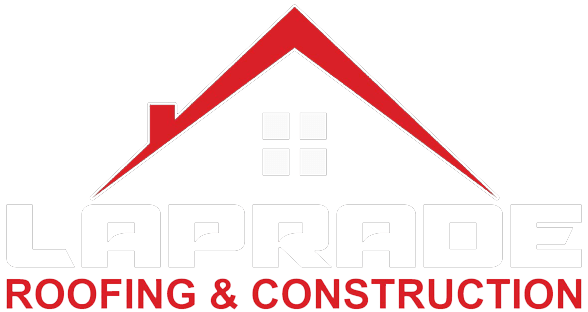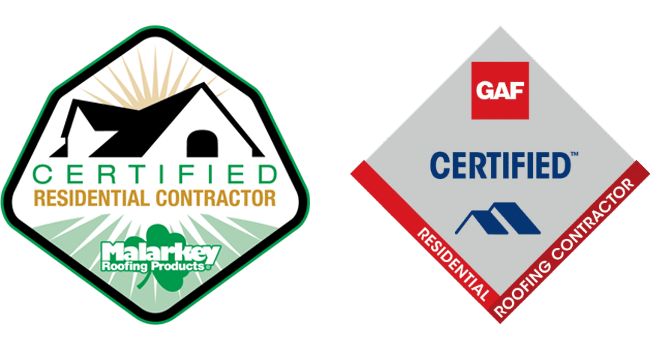Understanding Siding Damage and When Repairs Are Necessary
Your home’s siding serves as the first line of defense against weather elements, but over time, even the most durable materials can show signs of wear. We’ve seen firsthand how Spearfish, SD, and the surrounding areas weather patterns can impact siding integrity, from intense summer heat to winter freeze-thaw cycles. Common indicators that your siding needs attention include visible cracks, warping, loose panels, moisture stains, or areas where the material has pulled away from your home’s structure. Small holes from woodpeckers or other wildlife are particularly problematic because they create entry points for moisture and insects.
At LaPrade Roofing & Construction, we ensure our customers are supported through the whole roofing process and provided with transparent communication through all steps. This same commitment extends to our siding repair services. When we assess siding damage, we look beyond surface issues to identify underlying problems that could compromise your home’s structural integrity. Water infiltration behind damaged siding can lead to rot in wooden framing members, mold growth within wall cavities, and decreased insulation effectiveness that drives up energy costs.
Our Comprehensive Siding Repair Process
Every successful siding repair begins with a thorough inspection. We examine not just the damaged areas but the entire siding system to ensure we’re addressing all potential issues. Our evaluation includes checking for proper installation of moisture barriers, examining flashing around windows and doors, and verifying that existing siding maintains appropriate expansion gaps. This comprehensive approach helps prevent future problems and ensures repairs blend seamlessly with existing materials.
The repair process itself varies depending on the siding material and extent of damage. For vinyl siding, we carefully remove damaged sections without disturbing surrounding panels, replace any compromised house wrap or insulation, and install new siding pieces that match your existing color and profile. With fiber cement siding, repairs often involve cutting out damaged sections, treating any exposed areas for moisture protection, and installing replacement pieces with proper caulking and paint matching. Wood siding repairs require additional steps including priming all cut edges, ensuring proper ventilation behind the siding, and applying protective sealants to prevent future moisture damage.
Different Siding Materials Require Specialized Repair Techniques
Each siding material presents unique repair challenges and opportunities. Vinyl siding, while durable and low-maintenance, can become brittle in extreme temperatures and may crack upon impact. We maintain relationships with multiple suppliers to source discontinued colors and styles, ensuring repair sections match perfectly. Our crew has lived in the area for over 15 years, so we stand by our workmanship and will make things right if needed.
Fiber cement siding offers exceptional durability but requires specific tools and techniques for proper repair. We use specialized cutting equipment to minimize dust and ensure clean edges, apply appropriate primers and sealants designed specifically for cementitious materials, and follow manufacturer guidelines for fastening and spacing. Wood siding demands the most intensive repair process, often involving:
- Wood species matching to ensure consistent grain patterns and natural weathering
- Moisture content testing before installation to prevent warping
- Back-priming all surfaces including cut ends for maximum protection
- Professional-grade wood fillers for minor damage that doesn’t require full replacement
Preventing Future Siding Problems Through Proper Maintenance
Regular maintenance significantly extends siding lifespan and reduces repair frequency. We recommend annual visual inspections focusing on areas prone to damage such as sections near ground level, areas beneath roof eaves, and siding adjacent to deck attachments or other structures. Keeping vegetation trimmed back at least twelve inches from siding prevents moisture retention and reduces pest access. Power washing should be done carefully with appropriate pressure settings to avoid forcing water behind siding panels.
We are also backed up by GAF being a certified contractor so we will have the backing and resources from the largest shingle manufacturer in the United States. This certification demonstrates our commitment to industry best practices across all exterior services. “Satisfaction. Every Shingle Time.” isn’t just about roofing – it’s our approach to every exterior project. We apply the same attention to detail and craftsmanship standards whether we’re replacing a roof or repairing a small section of damaged siding. Our goal is always to provide repairs that not only solve immediate problems but also enhance your home’s long-term protection and value.

